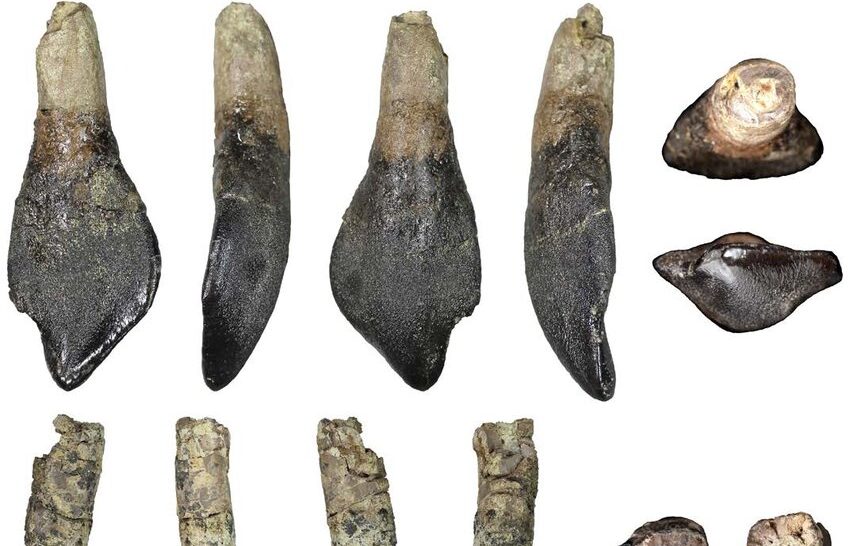A team of Moroccan and international researchers has uncovered three fossilized teeth belonging to giant dinosaurs near the city of Boulemane, dating back to the Bathonian period (Middle Jurassic, around 168 to 166 million years ago).
An academic article published on August 7, 2025, in the prestigious journal Acta Palaeontologica Polonica reported that these fossils were found in the Elmers III formation in the Bouhlifa plain, a globally recognized site for studying Middle Jurassic life, enhancing knowledge of dinosaur evolution during this period.
The study confirmed that this discovery represents the earliest confirmed evidence of the Turiasauria group in Africa, marking the first stable remains of this group found in Morocco.
Turiasauria dinosaurs, which are herbivorous and belong to the classical sauropod family, are characterized by wide, flat teeth with a heart-shaped crown. The Moroccan specimens exhibit these features but differ from European species such as Turiasaurus riodevensis, leading researchers to cautiously classify them as “indeterminate Turiasauria.”
Researchers noted that sudden floods regularly reveal and refill layers of the site containing fossils, with teeth collected from the surface before being buried again under several meters of sediment. This sediment, referred to as the “Great Flood Quarry,” is located in the green part of the Elmers III formation.
The same geological formation previously yielded significant discoveries, including the oldest known armoured dinosaur and the first of its kind in Africa (Spicomellus afer), as well as early forms of plated armoured dinosaurs (Adratiklit boulahfa and Thyreosaurus atlasicus), along with the earliest documented sauropod dinosaur of the ornithischian lineage. These findings affirm that the Middle Atlas region is crucial for understanding the emergence of major dinosaur groups. The study highlighted that these teeth expand the known geographic range of Turiasauria during the Middle Jurassic, alongside documented records in Madagascar and Tanzania, with older evidence found in Northern Europe.
It concluded that this group, first described in the Iberian Peninsula, exhibited a widespread continental distribution between the ancient continents of Laurasia and Gondwana, positioning Morocco at the heart of major migrations of these prehistoric giants.
Source
















